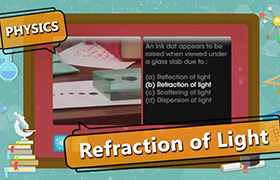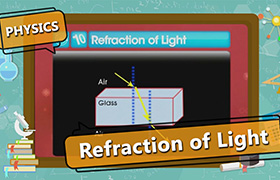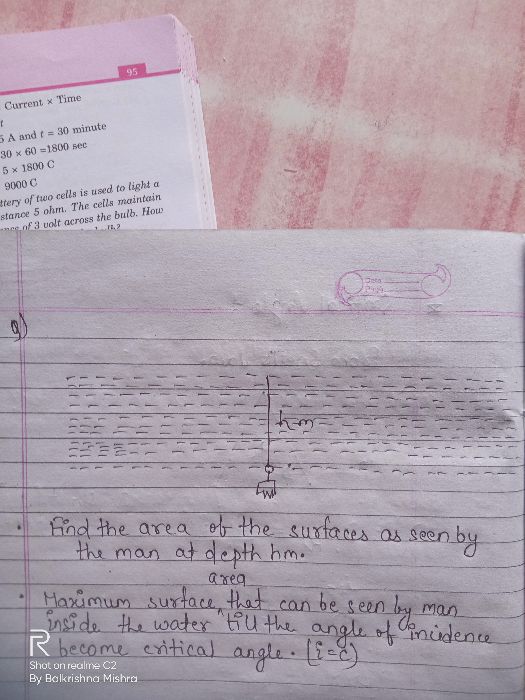CBSE Class 10 Answered
What if A is not given in the angle of deviation formula?
i + e - A
Asked by gourimondal80 | 12 Nov, 2021, 20:09: PM

Figure shows the passage of light through a triangular prism ABC. The angles of incidence and refraction at the first face AB are i and r1,
while the angle of incidence (from glass to air) at the second face AC is r2 and the angle of refraction or emergence e. The angle between the
emergent ray RS and the direction of the incident ray PQ is called the angle of deviation, δ.
while the angle of incidence (from glass to air) at the second face AC is r2 and the angle of refraction or emergence e. The angle between the
emergent ray RS and the direction of the incident ray PQ is called the angle of deviation, δ.
In the quadrilateral AQNR, two of the angles (at the vertices Q and R) are right angles.
Therefore, the sum of the other angles of the quadrilateral is 180º.
Therefore, the sum of the other angles of the quadrilateral is 180º.
∠A + ∠QNR = 180º
From the triangle QNR, r1 + r2 + ∠QNR = 180º
Comparing these two equations, we get , r1 + r2 = A ..............................(1)
The total deviation δ is the sum of deviations at the two faces, δ = (i – r1 ) + (e – r2 ) ........................(2)
Hence , we get from eqn.(1) and eqn.(2) , δ = i + e – A ...........................(3)
------------------------------------------------------------------------------
To determine the angle of deviation δ , we use equation (3) .
From the known values of angle of incidence i , angle of emergence e and angle of prism A ,
we get angle of deviation δ from eqn.(3)
If angle of prism A is not known , then we use eqn.(2) . Eqn.(2) helps us to get angle of deviation δ from angle of incidence i,
angle of refraction r1 at incident surface , angle of emergence e and angle of incidence r2 at emergent surface .
Angle of refraction r1 is determined from Snell's law , sin(i) / sin(r1 ) = μ , where μ is refractive index of material of prism
Angle of incidence r2 is determined from Snell's law , sin(e) / sin(r2 ) = μ
Answered by Thiyagarajan K | 12 Nov, 2021, 23:39: PM
Application Videos
Concept Videos
CBSE 10 - Physics
Asked by infinityupgraded | 13 Apr, 2024, 08:17: AM
CBSE 10 - Physics
Asked by suryamr2019 | 08 Mar, 2024, 16:32: PM
CBSE 10 - Physics
Asked by deepbhagat1090 | 13 May, 2023, 21:40: PM
CBSE 10 - Physics
Asked by ak23012007 | 25 Oct, 2022, 21:50: PM
CBSE 10 - Physics
Asked by vaishnavimishra2003 | 14 Jun, 2022, 07:45: AM
CBSE 10 - Physics
Asked by ajyaduvanshi9415 | 24 Jan, 2022, 11:34: AM
CBSE 10 - Physics
Asked by sentilkannan | 27 Nov, 2021, 11:44: AM
CBSE 10 - Physics
Asked by gourimondal80 | 12 Nov, 2021, 20:09: PM
CBSE 10 - Physics
Asked by ratnamaddala88 | 18 Oct, 2021, 08:18: AM
CBSE 10 - Physics
Asked by ashmeetkaur873 | 17 Oct, 2021, 12:22: PM










